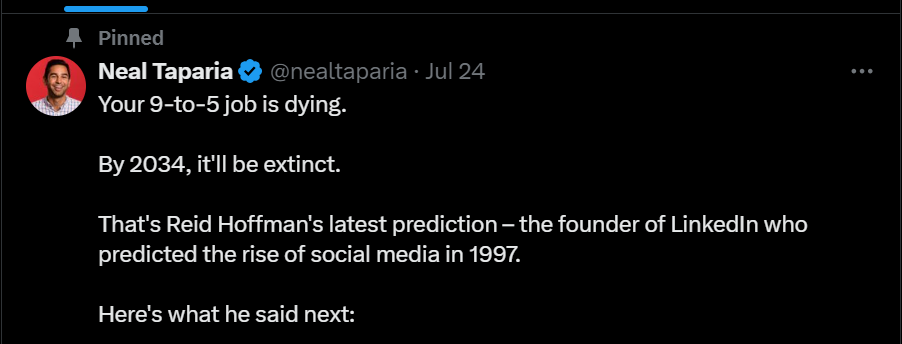The Future of Work: Fluid, Flexible, and Productive

As Gen Zs step farther away from the office desk, experts see the 9 to 5 job becoming obsolete, replaced by a fully remote gig economy model.
From a temporary Work From Home (WFH) pandemic set-up, to hybrid or a 4-day work week, to a fully remote, results-based, gig economy. The modern work set-up is fast changing with the times and technology.

The Business Manual explores these new work trends and the benefits and opportunities they bring. Let’s take a closer look at workplace trends such as the 4-day work week, hybrid work, and the gig economy.
The 4-Day Work Week
Despite the need to rally economies with increased productivity post-pandemic, more and more countries are now opting for a different approach. Counter-intuitively, they are choosing to reduce their work hours instead.
According to the career website 4dayweek.io, although no country has permanently adopted a 4-day work week yet, 22 countries are now on a test run, including the United States, UK, United Arab Emirates and Germany.
Positive Feedback in Europe
Germany’s trial run for the 4-day work week has been described as “extremely successful.” These results have encouraged an impressive 93% of the 45 companies who participated in September last year to either make the set up permanent or extend it further.
4dayweek.io reports that benefits included enhanced employer attractiveness, which in turn improved the quality and quantity of candidates, and helped address Germany’s labor shortage; better employee engagement and increase in work-life balance, leading to fewer absences and leaves; and improved physical and mental health.
Productivity wise, the study shows that despite fewer work days, productivity remained the same or even improved for the participating companies.
In the UK, which staged the biggest pilot test with 61 companies participating in 2022, 89% decided to extend the run. From these companies, 51% have already permanently adopted the policy. According to the Guardian, which shared the study’s results, 82% reported positive effects on their staff’s well-being. Half reported reduced employee turn-over. Meanwhile 46% said productivity improved.
U.S. Bill for 4-Day Work Week
The positive results are emboldening more countries to join the bandwagon. In the United States, Senator Bernie Sanders has introduced a bill to shorten working hours to just 32 hours, arguing that advances in automation, AI, and robotics have made work faster.
Japan’s Cultural Shift
Even Japan, one of the most workaholic countries in the world, is now pushing its companies to slow down.
The Japanese government first encouraged the work reduction in 2021, but had very few takers. A report from The Independent says, only 8% of Japanese companies currently allow their employees to take three or more days off per week. But the government has now revived the campaign, encouraging shorter hours and other flexible work arrangements, as well as limits on overtime. In return its Labor Ministry is offering free consultation and grants. But The Independent reports, that only three companies have so far expressed interest.
In one of the test cases, of the 63,000 employees at Panasonic Holdings Corporation who had the option to avail of the fewer work days, only 150 employees participated. This reflects the struggle in changing the current work culture.
The current practice expects people to conform and sacrifice for one’s company and colleagues, which leads to working long hours. In addition, employees take only short breaks during official holidays so that one’s work is not passed on to colleagues as an additional burden.
The pressure to overwork is so intense that the country has its own term for it: karoshi, which in English translates to “death from overwork.”
With its aging population and low birth rate, Japan is now ramping up its efforts to adopt change. The government projects a substantial 40% drop in its working age population to 40 million people by 2065. An improved and more flexible work set-up is hoped to keep its people in the workforce longer.
The Hybrid Set-Up
Here at home, though the 4-day work week is not being considered by policy makers, the hybrid set-up has been widely popular. Many companies require onsite work only two to three times a week, since the end of the pandemic.
Senior Talent Acquisition Expert, Chel Dantes shares that although some large corporations have started to require a return to the office (RTO), she believes the hybrid set-up is likely here to stay. “The large companies that require a return to the office still do hybrid for the departments where it is workable. So the set-up is still partially retained,” explains Dantes.
Dantes believes the hybrid policy has been beneficial to companies, as it attracts more talents and increases retention, especially in a country like the Philippines where traffic alone becomes a large source of stress.
Another consideration is the change in the attitude and outlook of the younger generation, who unlike the older generations, prioritize work-life balance and their mental health over monetary compensation and career advancement. “They’re willing to have a lower salary to have more time and to do the things that they like,” says Dantes. “People are really looking for balance.”
Gig Economy and More Micro Enterprises by 2034
But what if the 9 to 5 work model becomes obsolete altogether? Could the working world transform into one big gig economy? This is precisely the prediction of LinkedIn co-founder Reid Hoffman, who predicted that this will be the reality in just 10 more years, or by 2034.

Hoffman shared the forecast in an interview in 2017, which trended after entrepreneur and angel investor Neil Taparia re-shared it in his social media platforms.
Taparia noted that Hoffman’s past predictions have all come true. “Predicted social networks would change the world (LinkedIn sold for $26B), saw the sharing economy coming (Early Airbnb investor, called the AI revolution years before ChatGPT. So we should probably listen to his latest prediction,” admonishes Taparia.
Hoffman also predicts, that half of the U.S. population will become freelancers by 2034 and they will even earn more than traditional employees, thanks to their specialized skills. The work will also be more results-driven rather than time bound, freeing professionals from the 9 to 5 (or longer) “corporate slave” model.
For Taparia, this means focusing more on building one’s online portfolio and personal brand to stand out.
Along with the emergence of the gig economy, Taparia sees the rise in micro enterprises, where an individual’s passions would create new enterprises, and one in three professionals will have multiple micro businesses.
“The future of work isn’t just flexible, it’s fluid. You’ll seamlessly shift between employee, freelancer, entrepreneur, and investor. But the million-dollar question remains… Are you ready to seize this unprecedented opportunity for freedom and wealth creation?” asks Taparia.
You have 10 years to prepare and make the answer a resounding YES.






